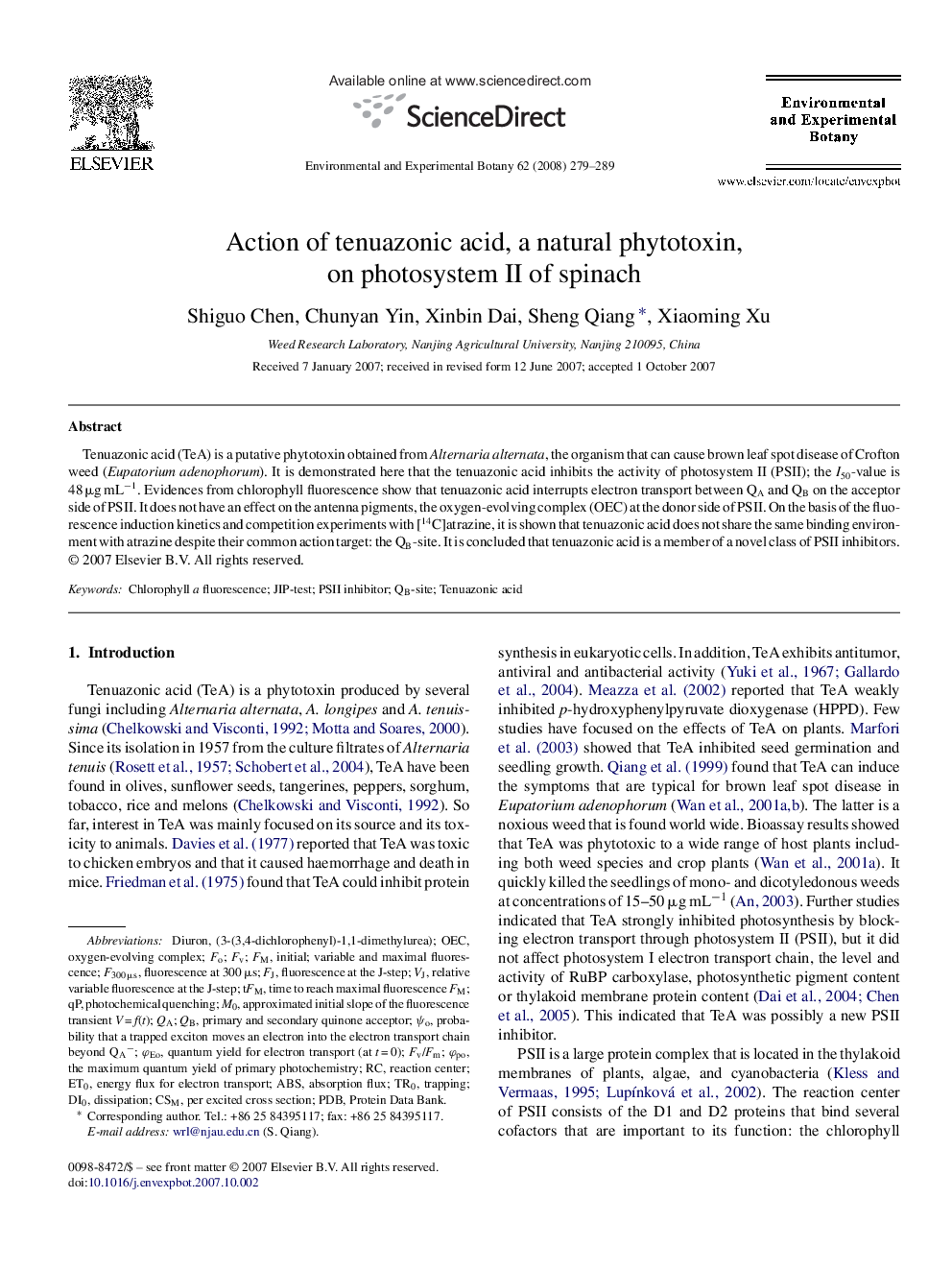| Article ID | Journal | Published Year | Pages | File Type |
|---|---|---|---|---|
| 4555438 | Environmental and Experimental Botany | 2008 | 11 Pages |
Abstract
Tenuazonic acid (TeA) is a putative phytotoxin obtained from Alternaria alternata, the organism that can cause brown leaf spot disease of Crofton weed (Eupatorium adenophorum). It is demonstrated here that the tenuazonic acid inhibits the activity of photosystem II (PSII); the I50-value is 48 μg mLâ1. Evidences from chlorophyll fluorescence show that tenuazonic acid interrupts electron transport between QA and QB on the acceptor side of PSII. It does not have an effect on the antenna pigments, the oxygen-evolving complex (OEC) at the donor side of PSII. On the basis of the fluorescence induction kinetics and competition experiments with [14C]atrazine, it is shown that tenuazonic acid does not share the same binding environment with atrazine despite their common action target: the QB-site. It is concluded that tenuazonic acid is a member of a novel class of PSII inhibitors.
Keywords
Related Topics
Life Sciences
Agricultural and Biological Sciences
Ecology, Evolution, Behavior and Systematics
Authors
Shiguo Chen, Chunyan Yin, Xinbin Dai, Sheng Qiang, Xiaoming Xu,
